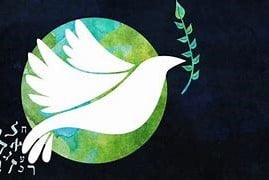A while ago friends of ours introduced us to Milkweed. No, this is not a new oat or nut milk – it is a plant! We have heard of all kinds of plants and have tried to do our share of planting, especially wildflowers for the bees. Oh, but milkweed we discerned, is the life link within the monarch butterfly community.
Learning about milkweed led us to appreciate the compelling journey of the ancestral flight of the Monarch. The colorful yellow and black butterflies go through four stages during one life cycle and through four generations in one year. The growth stages are the egg, larvae/ caterpillar, the pupa/chrysalis, and the adult butterfly. It takes about 30 days for this cycle to be completed. What we did not realize was that each year these fragile butterflies follow an incredible path from Mexico to the US and Canada and back again on their epic journey. Along the way, the female adult butterflies lay their eggs before dying. The eggs become caterpillars, turn to butterflies, and the next generation begins. This generation travels, stops to lay eggs, and will die, thus beginning the next generation. From south to north and south again, the butterflies eventually arrive, four to six generations later, to the mountains of Mexico. When you see a Monarch in your garden, realize that it took over 2-3 generations of Monarchs to get there.
Along the way, each cohort encounters storms, predators, herbicides, pesticides, changing global weather patterns, and the modernization of the world. Their generational search for survival includes not only battling the elements but the struggle to find food sources across a vast land of hostile habitats. To make their trek even more compelling, the nutritional value of the milkweed plant is the key to sustaining each generation. Not only do milkweed plants keep the butterflies from starving but it increases the odds that the next generation will make it into your backyard. There is no substitution for where the monarchs can lay their eggs but, in the milkweed plant, it also becomes the monarch caterpillar’s main diet. Thus, their survival is totally dependent on milkweed.
Beyond the obstacles, these fragile creatures take to flight and fight to sustain their little families. The relationship between the Monarch and milkweed has been called symbiotic.The exchange of nectarand plant pollination allows the butterflies and milkweed to thrive and thus provides more nurseries for the next generation of Monarchs.
On a personal note, having learned what we have recently about Monarchs, last week we saw a large adult Monarch floundering in the grass by our sidewalk. We feared that it may be harmed so Maggie gently picked it up which it allowed her to do. It gently walked up her arm with its prickly little feet and then took its last flight from her arm into the garden where it was safe once again. We realized afterwards that the butterfly was in the process of dying, having already laid its eggs. If it could have spoken, we believe, it would have said “thank you” and we would have said the same in return.
We want to thank our friends for enlightening us about the peril and the process of these dear creatures. As Earth Day approaches, there may be no better time for us to focus on Monarchs and the milkweed plant.
Earth Day was first established in 1970 by Senator Gaylord Nelson, a junior Senator from Wisconsin. Now, 1 Billion people in 190+ countries take part in Earth Day celebrations. If you have a favorite plant or animal or outdoor place, honor it on Thursday, April 22nd by doing something to sustain its existence. We know what we will be doing – planting more milkweed!
Etched in Time
Wherever you go
Whatever you do
A little piece of you stays there,
A mark in the sand that the tide cannot wash away
You make your mark on eternity every day.
Happy Earth Day April 22, 2021



